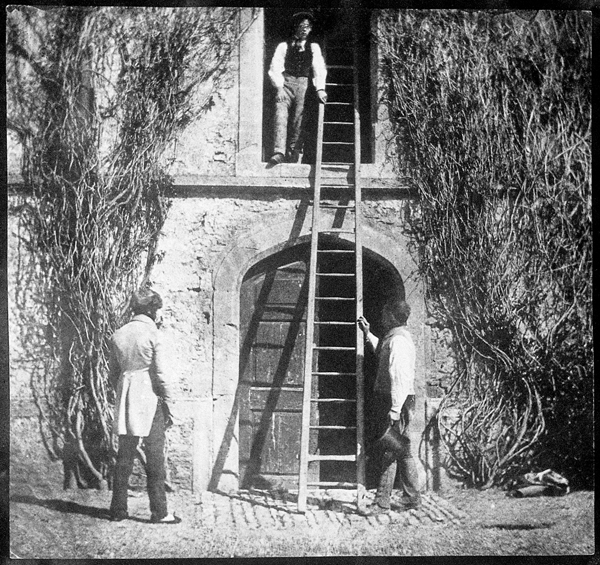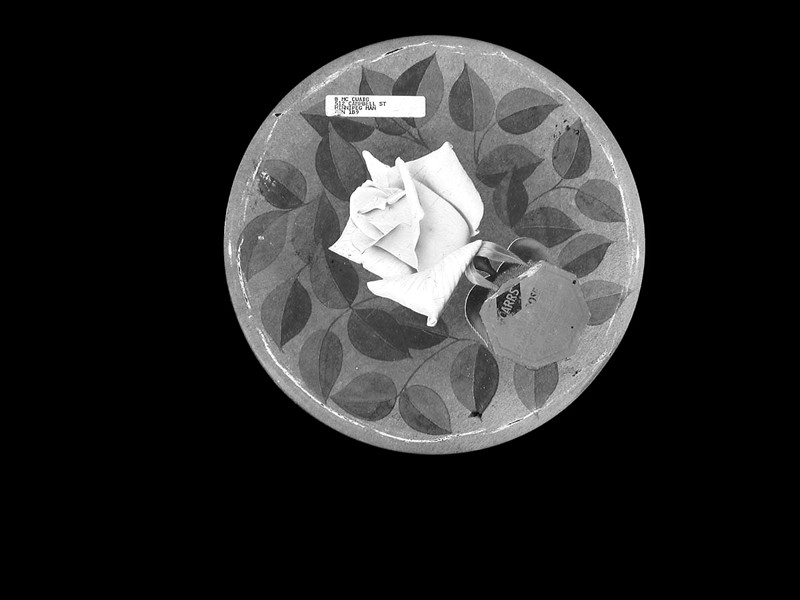[Fall 2000]
by Susan Close
A knowledge of photography is just as important as that of the alphabet. The illiterate of the future will be ignorant of the use of camera and pen alike. –Laszlo Moholy-Nagy, 1923
But What Does It Mean to Read a Photograph?
Because of its representational and documentary qualities, photography has, since its earliest days, been a controversial medium. My own interest in photography relates to the belief that photography is a social practice that can be read, like a text, to provide information about the social and historical context in which an image was made. The act of reading the image is the final act of a collaboration in which the photographer creates the image and the viewer decodes it. To read a photograph, one accepts that an image can be viewed as a visual text. The image must be examined closely and a detailed study made of the information or “signs” it contains. The reading of photographic images is informed by semiotics, the study of the use and social function of signs, both linguistic and visual.
The French semiotician Roland Barthes’s discussion of the power of the family photograph in Camera Lucida provides a theoretical perspective that can be applied to the analysis of reading of photographs. He discusses his own emotional reaction to the reading of domestic images. He first reflects on the nature of photography, concluding that it elicits two responses, by studium or by punctum. Barthes labels photographs that are merely studies of the ordinary and designed solely to inform as studium. His particular interest, however, lies in the few images that “break or punctuate” this studium and, in doing so, disrupt the ordinary and surprise the spectator. This effect, which he calls punctum, is what happens when powerful images “prick,” “bruise,” and “create a sense of the poignant.” Barthes argues that these powerful, emotional images are often found in family photograph albums. His reading of a photograph of his mother as a little girl, standing with her brother, leads to his conclusion that the photograph contains punctum, for in it he finds the essence of his mother.
It is important to keep in mind that this impact of an image is not only a found meaning read into an image by the viewer, but also a coded sign constructed by the image’s producer or the editor of the family album. The making of the family photograph album is a form of social practice; however, the owner/maker of the family album should not be seen as a social historian searching for a kind of “truth,” but as a constructor of personal truth. Cultural theorist Marianne Hirsch concurs, in her essay “Masking the Subject: Practicing Theory”:
Even more clearly than cinema . . . still photography reveals how cultural practices produce and reproduce dominant ideologies, whether of gender, of class, of sexuality, or . . . of familiality. Unlike film, the still picture is focused by only the camera eye, whose point of view coincides with the perspective of the viewer, aiming to shape and determine the viewer’s position. . . . We perceive what we are prepared to perceive. (Bal, M. and I.E. Boer, eds., in The Point of Theory, Practices of Cultural Analysis [Amsterdam: University of Amsterdam Press, 1994], p. 109)
Hirsch uses the visual images themselves as the “point of entry” into theoretical analysis of the “power and constraints of familial mythologies.” Such a process of practising theory, or “stepping into the visual,” is based on the writings of Mieke Bal. In Reading Rembrandt, Bal argues that “if we understand theory in its etymological background (which is, after all visual) . . . it ceases to be a dominating discourse and becomes rather a willingness to step into the visual, and to make discourse a partner, rather than a dominant opponent, of visuality.” (Reading Rembrandt, Beyond Word-Image Opposition [New York and Cambridge: Cambridge University Press, 1991], p. 288)
Photography as Social Practice
The idea of photography as social practice rather than art object was pioneered by European thinkers such as Walter Benjamin and Roland Barthes, whose ideas have influenced a variety of theoretical writings on arts, culture, and politics. The German cultural theorist Walter Benjamin produced a number of seminal works on photographic theory. Benjamin’s essay “Art in the Age of Mechanical Reproduction,” published in 1936, set the stage for the medium to be seen as a democratized art form that moved away from the “aura” of the art object. The American writer Susan Sontag was influenced by both Benjamin and Barthes. Sontag brought the ideas of these European intellectuals to North America and presented them in a series of essays directed toward the general public. Her book On Photography outlines Benjamin’s questions about the relationship between the mass reproduction of imagery and its spiritual effect. Benjamin theorized that mass visual reproduction links art to revolutionary and social movements and that it would be more effective to convey messages about social concerns advocating change if one used a less élite art form such as photography.
Photographic history was slow to be influenced by these ideas, although a small group of writers, including Rosalind Krauss, Douglas Crimp, Martha Rosler, Allan Sekula, and John Tagg in the United States and Victor Burgin in Britain, did deal with issues raised by semiotics, structuralism, Marxism, feminist psychoanalytic theory, and post-structuralist thought. These writers began to analyze the medium in terms of its relationship to social history.
Influenced by the writings of Barthes, in 1975 Allan Sekula published his seminal essay “On the Invention of Photographic Meaning.” Sekula, too, thought that photographs should be read as cultural images, not merely as aesthetic objects or documentary pictures. He argued for a “photographic discourse” that would provide “a system within which culture harnesses photographs to various representational tasks.” (V. Goldberg, ed., reprinted in Photography in Print: Writings from 1816 to Present [Albuquerque: University of New Mexico Press, 1981], p. 452) Sekula’s article presented a significant challenge to the photographic canon and is therefore a key reference in the reconsideration of the status of the photograph.
In his essay “Currency of the Photograph: New Deal Reformism,” John Tagg examines how photographic practice has become part of many of the social rituals that it records; consider, for example, weddings, fashion shows, political gatherings, or the Academy Awards ceremony. Tagg argues that the social function of the photograph is its value, or currency: “What I am trying to stress here is the absolute continuity of the photographs’ ideological existence with their existence as material objects whose ‘currency’ and ‘value’ arise in certain distinct and historically specific social practices and are ultimately a function of the state.“ (in The Burden of Representation, Essays on Photographies and Histories [Minneapolis: University of Minnesota Press, 1988], p. 165)
The French sociologist Pierre Bourdieu published his examination of photography as social practice, Un art moyen, in 1965. Bourdieu begins his analysis by defining photography as “art moyen,” a practice carried out by the ordinary person that must be defined in terms of its social practice. These functions are described by Bourdieu as relating to the structure of the family in the modern world with the family photograph as an index, or evidence, of a unity that, at the same time, is a tool in the production of that unity. Bourdieu argues that photography is “frequently nothing but the reproduction of the image that a group produces of its own integration.”
It is in the unassuming images, the family photographs, the images of domestic objects and interiors that we can find clues to the identity of their makers and the society in which they function. Whether we are considering domestic objects photographed in the nineteenth century by Henry Fox Talbot or in the twenty-first century by William Eakin, it is only through a careful and considered reading that we can come to an understanding of the images and reflect upon their significance.
Susan Close is a Ph.D. candidate at the Amsterdam School for Cultural Analysis, University of Amsterdam. She is currently a sessional lecturer in photography and art history at the University of Manitoba.




